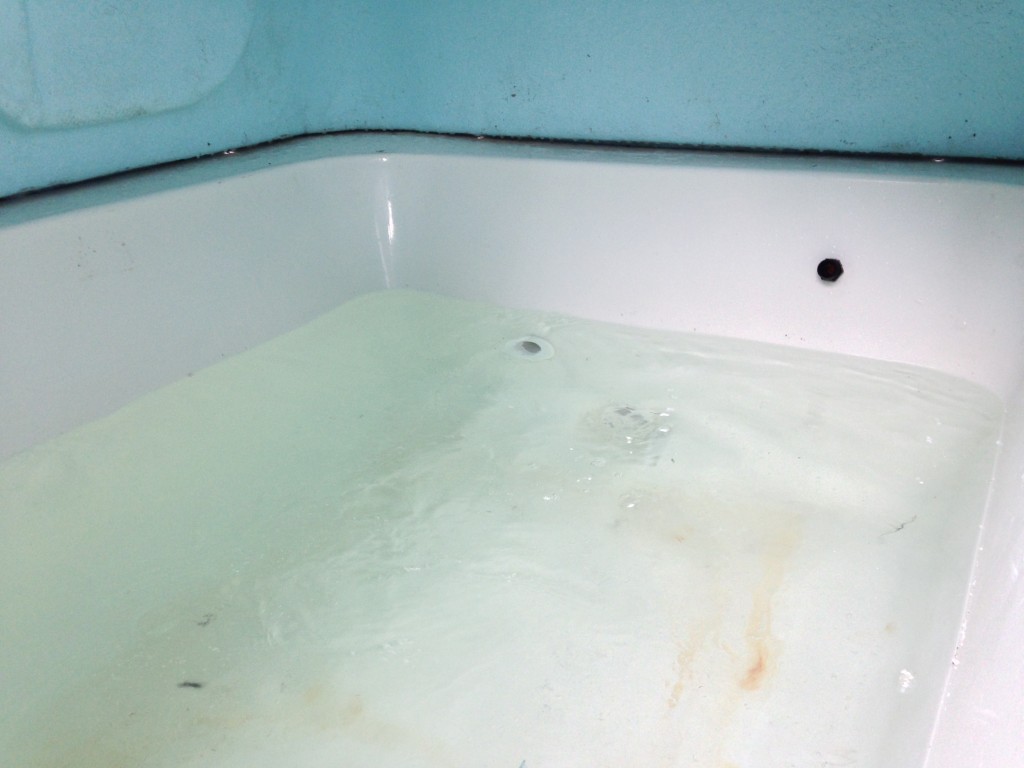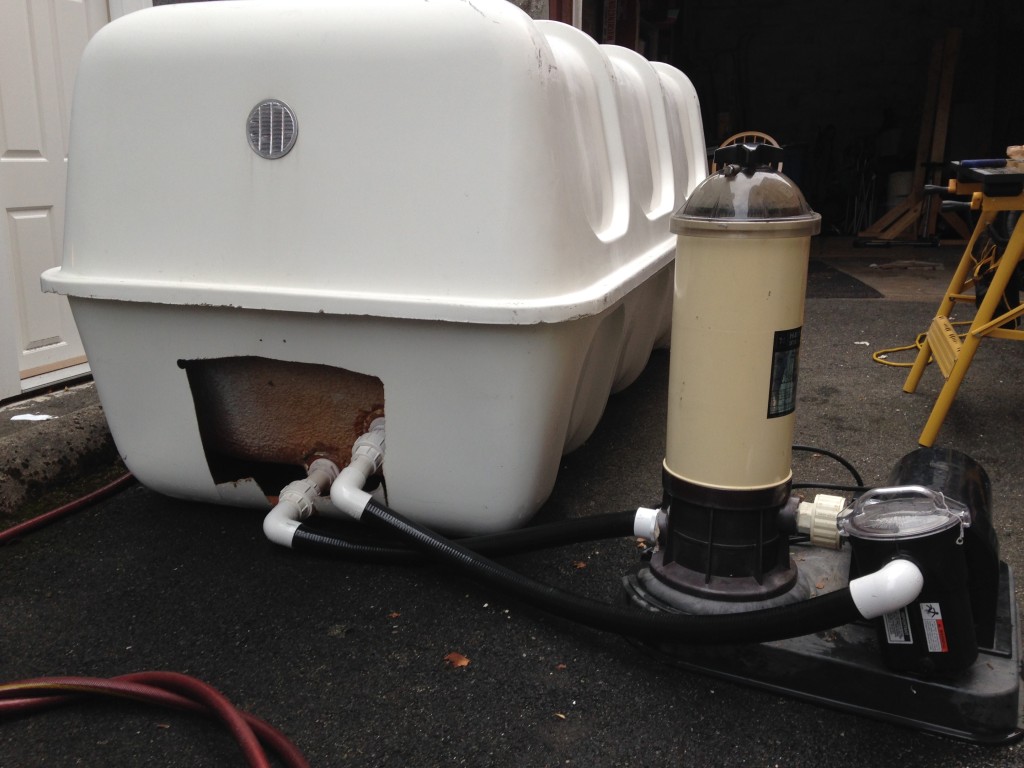The tank we acquired included a powerful pump and a swimming pool-sized filter. Or at least, it had the parts, but for weeks I had no way to confirm whether they actually worked. It can be harmful to turn on a pump with no water in it, and in any case would prove nothing except that it made noise.

To test it, I had to get new PVC piping to replace the parts that had been hacksawed up when the last owner took the tank apart. Home Depot doesn’t carry 1½-inch flexible PVC for plumbing this sort of thing, though — it seems to be kind of a specialty item for hot tubs and saltwater aquariums.
Last week mail-order finally arrived, and I could cut up and dry-fit everything in the driveway. Here’s the tank with water in it and the pump running at last. The picture hardly does justice to how powerful the pump is — that water is churning hard.
The problem with filtering a float tank is that, if you have any current at all while you were trying to float in there, it will keep bumping you into the sides of the tank. That would be no good at all. You’re supposed to be able to forget where you are, so the pump can’t be on while anyone is in the tank. The tank water still needs to be filtered to stay clean and sparkling, so instead it’s aggressively filtered between uses, 50 gallons per minute. The tank is only a little more than 200 gallons of water, so the pump churns through a full overturn of the tub every four to five minutes.

This is what the plumbing looks like. (For the record, I didn’t hack that ugly hole in the end of the tank!)
It’s a good thing I dry-fit everything, because the first time I put it together, I got the intake and return pipes swapped. The pump is supposed to pull water from near the surface of the tank, or else floating material will never be removed. (We also skim the surface with a net.)
Once I had everything together, I crossed my fingers and flipped the switch. VOOM.
I say testing went well and everything worked, and it did … except for one thing. Near the top of the filter there was a stupid little plastic bolt serving as a air release valve. When the system is being primed, there needs to be a way for trapped air to get out, and so there’s the simplest expedient possible — a threaded hole, and a bolt to tighten down once the system is primed. I was unscrewing it with my fingers when it just snapped on me — twenty-five years old and apparently too brittle to live.
A proper plastic replacement part is available online, in fact, for merely $18 and another 2-3 week mail order wait. For a bolt. Instead I got a steel one and and an O-ring from the hardware store. I’ll just have to be careful never to tighten it more than finger tight, or the steel threads could probably all too easily strip out the plastic vent hole.
——
That was last week. Yesterday several heroes of the float revolution spent a couple hours of their Sunday afternoon helping Sara and I shift the tank into our basement. Thank god it fit through the doors. Now I have to reassemble all the plumbing and apply PVC cement to make it waterproof. And then we wait for our thousand pounds of salt to be delivered. The order is in!